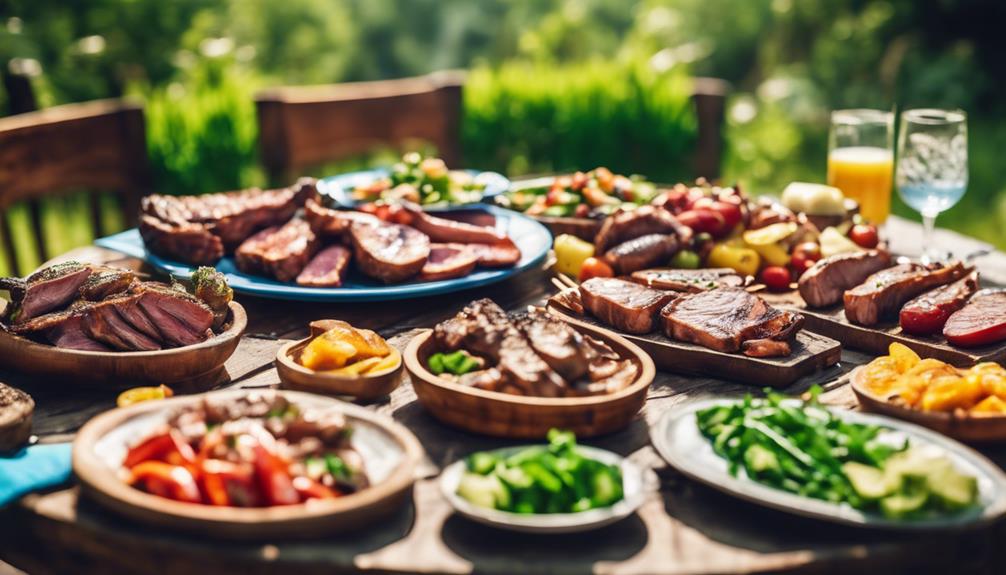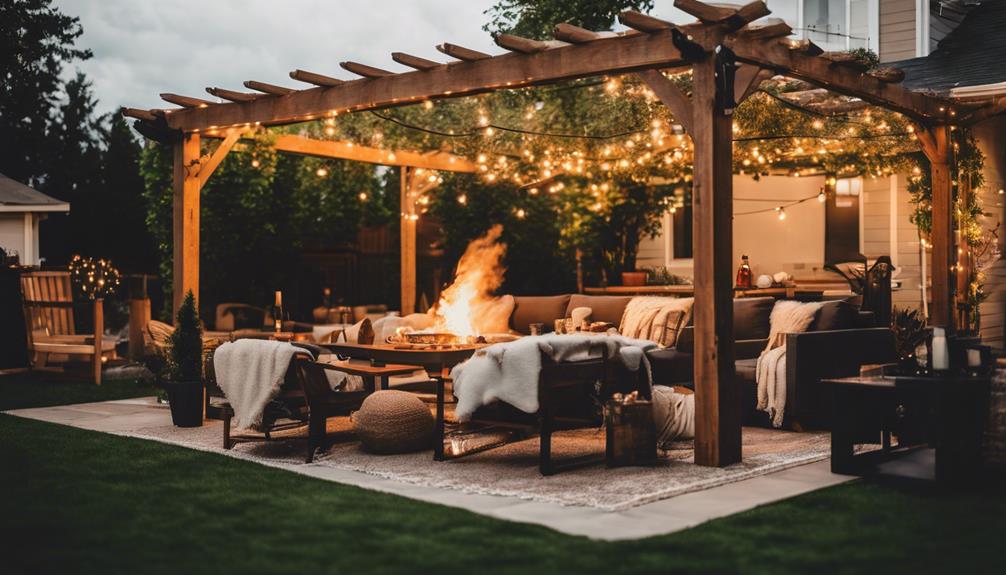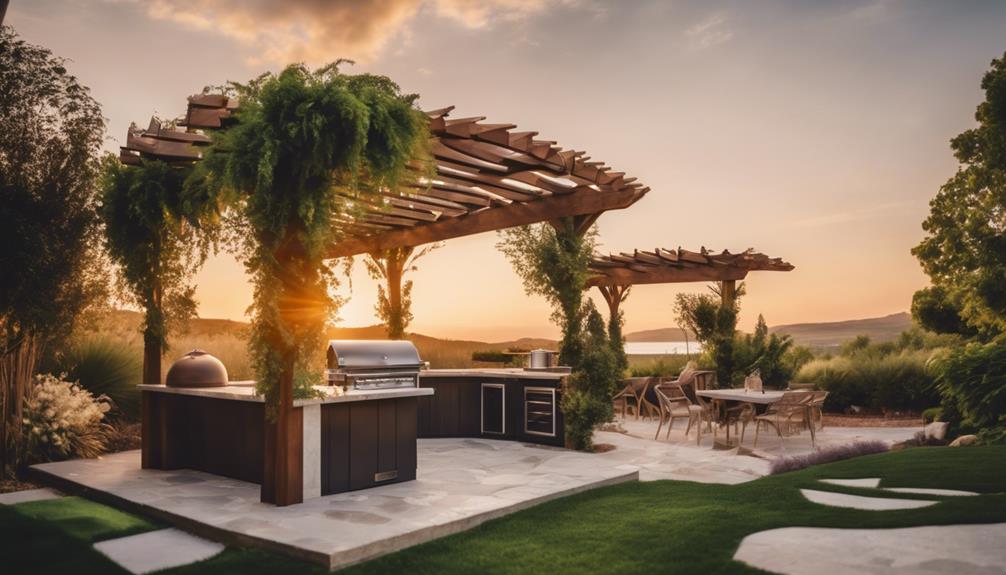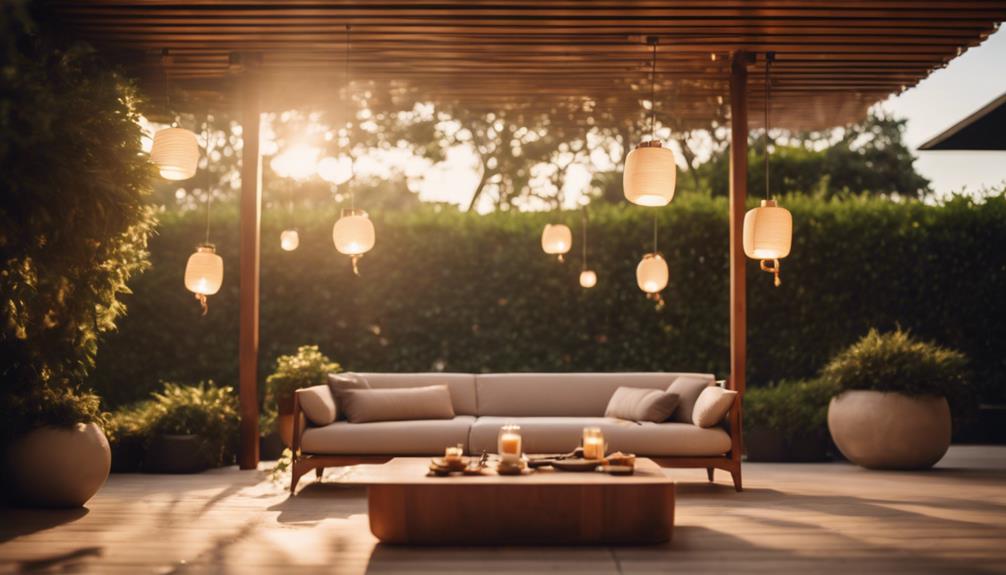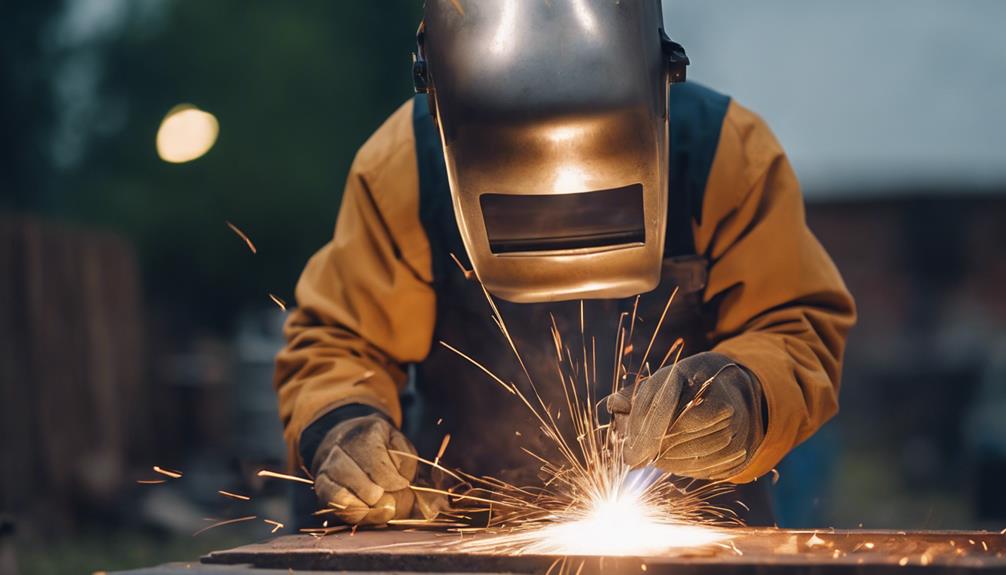You're ready to fire up your Alfresco BBQ and create an unforgettable outdoor cooking experience! To get started, master high-heat cooking with the sear zone and infrared burner. Prep your station with all necessary ingredients and utensils, and don't forget to preheat your cast iron for even cooking. Experiment with different cooking methods and recipes, like grilled desserts and unique side dishes. With the right techniques and recipes, you'll be on your way to a perfect cookout. And, with a few more tricks up your sleeve, you'll be the ultimate outdoor cooking master – so, what are you waiting for?
Key Takeaways
- Master high-heat cooking techniques using the grill's sear zone and infrared burner for perfect grilling results.
- Prep your station with necessary ingredients and utensils to ensure efficient cooking and minimize delays.
- Experiment with different cooking methods and recipes to elevate your Alfresco BBQ experience.
- Ensure perfect temperature control using Alfresco grill's advanced features, including infrared and convection burners.
- Don't forget to prioritize outdoor cooking safety by keeping a fire extinguisher nearby and checking for gas leaks.
Mastering Alfresco BBQ Techniques
To master Alfresco BBQ techniques, you'll want to start by understanding how to utilize the grill's sear zone for high-heat cooking with an infrared burner for quick warming. This zone is perfect for searing steaks, burgers, or veggies, giving them a nice char on the outside while locking in the juices.
When cooking with cast iron, make sure to preheat it before throwing your food on the grill. This guarantees an even cook and prevents food from sticking to the iron.
Before you go outside to fire up the grill, take a minute to prep your station. Make sure you have all the necessary ingredients and utensils within arm's reach. This will ensure you save time and stress, allowing you to focus on perfecting your grilling skills.
With Alfresco BBQ, it's all about experimenting with different cooking methods and techniques to achieve the perfect cookout. So, don't be afraid to try new things and get creative with your recipes!
Essential Tools for Perfect Grilling
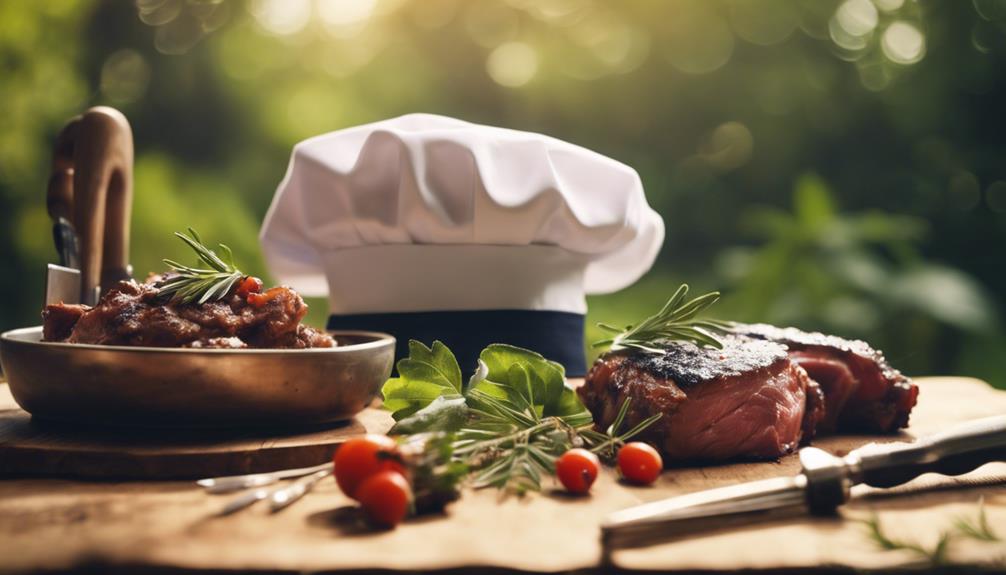
As you fire up your grill, you'll want to make sure you've got the right tools for the job! Having the essential tools on hand will make all the difference in achieving perfectly grilled food.
From keeping your grill clean to maintaining precise heat control, we'll explore the must-haves for a successful alfresco BBQ.
Grill Maintenance Essentials
You'll need a few essential tools to maintain your Alfresco BBQ grill in top condition, including a wire brush for cleaning grates, a grill brush for scrubbing surfaces, and a degreaser for removing grease buildup.
I've got a secret for you: regular maintenance is crucial to extending the life of your grill. It's not just about cleaning up after each use, but also about checking and replacing parts, like the drip pan, burners, and ignition system.
Don't forget to inspect the gas lines and connections for leaks, guarantee proper ventilation, and give the interior a good cleanout. When not in use, throw on a grill cover to shield your Alfresco BBQ from the elements.
And, of course, follow the manufacturer's guidelines for maintenance and cleaning. By following these simple steps, you'll be well on your way to hosting flawless cookouts all season long.
With a little TLC, your grill will be firing on all cylinders in no time!
Grill Brush Importance
A good grill brush is the unsung hero of your Alfresco BBQ, working tirelessly behind the scenes to keep your grates clean and your food flavorful. It's the secret to a successful cookout, guaranteeing that your grill is always in top condition. But why is a grill brush so important?
| Benefits of a Grill Brush | How it Helps |
|---|---|
| Removes leftover food particles | Prevents flare-ups and guarantees a clean cooking surface |
| Removes grease and charred residue | Extends the lifespan of your grill and improves flavor |
| Makes cleaning easier | Saves you time and effort with its sturdy bristles and long handle |
Heat Control Methods
Mastering heat control is vital for perfect grilling, and with Alfresco's advanced features, you're well on your way to achieving exceptional results. The convection burners and 5000 BTU smoker box burner provide precise heat control, giving you the flexibility to cook a variety of dishes. Plus, the V-line grate helps distribute heat evenly, so you can achieve consistent cooking results.
But that's not all – Alfresco grills also offer a sear zone for high-heat cooking and an infrared burner for added flavor infusion. And with a quick 4-minute heat-up time, you can get started on your grilling adventure in no time!
The 42-inch Alfresco grill takes it to the next level with three 27,500 BTU burners, offering versatility in heat control for different types of food. Whether you're cooking for a crowd or just a quiet dinner for two, Alfresco's heat control methods have got you covered. So go ahead, experiment with different heat settings, and take your grilling skills to the next level!
Sizzling Skillet Cooking Methods
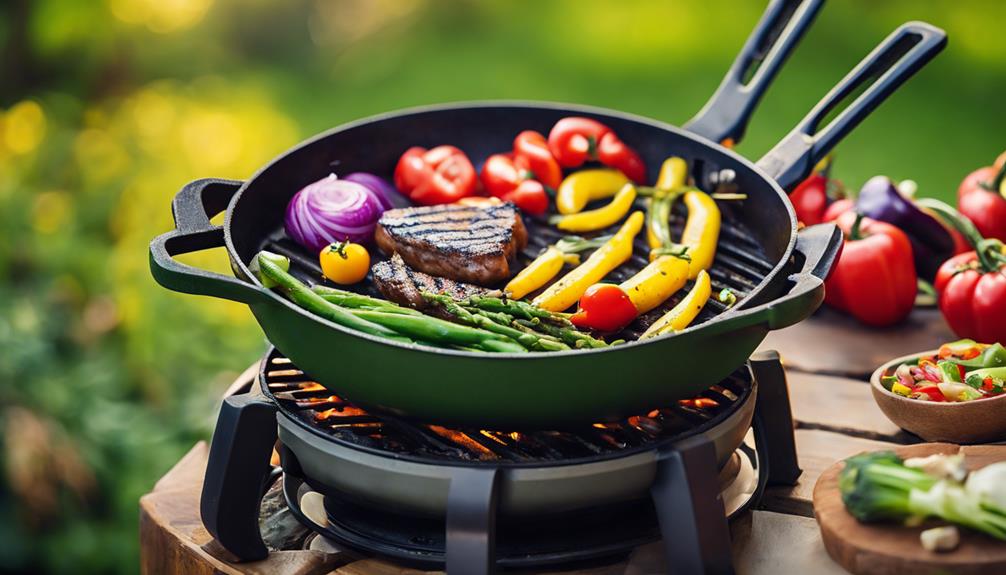
By preheating your skillet on an Alfresco BBQ, you can achieve a perfect sear and lock in juices and flavors. It's a game-changer for your cookouts!
With Alfresco's high-heat sear burners, you can get that sizzling skillet effect that'll make your dishes pop. And the best part? You can caramelize meats to add depth of flavor, making your BBQ creations truly unforgettable.
Using a skillet on your Alfresco BBQ is also super versatile – you can whip up everything from breakfast skillets to savory stir-fries. Plus, with precise temperature control and even heat distribution, you can cook with confidence, knowing your dishes will turn out perfectly.
Whether you're a grill master or a newbie, skillet cooking on an Alfresco BBQ is a must-try. So, fire up that skillet and get ready to take your BBQ game to the next level!
Infrared Burner Cooking Secrets
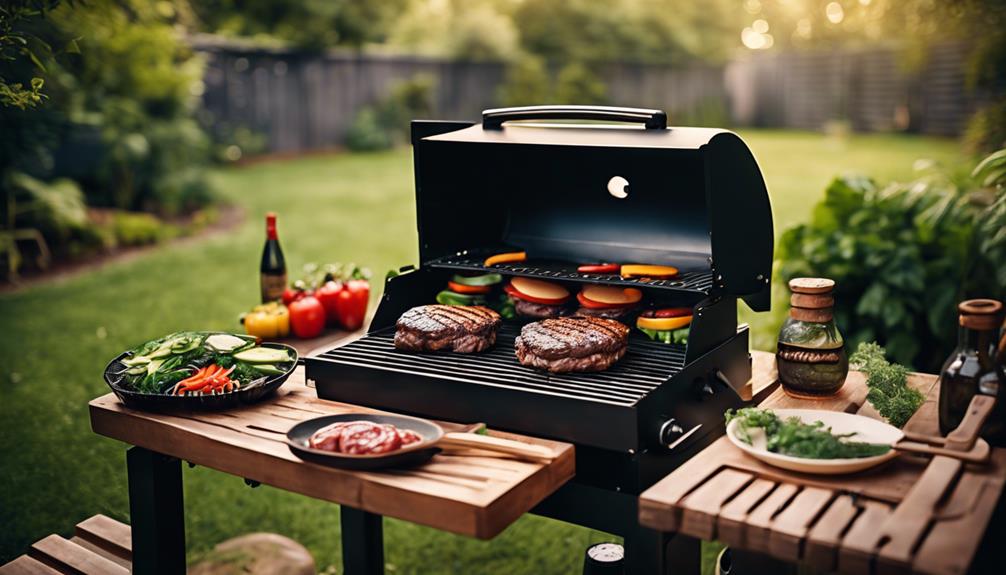
You'll be searing like a pro in no time, as the infrared burner on your Alfresco grill delivers the ultimate high-heat cooking experience. With temperatures reaching up to 1,700 degrees Fahrenheit, you'll be cooking like a master chef in no time! The infrared burner's even heat distribution and precise control let you achieve that perfect caramelized crust on your meats, locking in juices and flavors.
| Benefit | Description | Result |
|---|---|---|
| High-Heat Cooking | Reach temps up to 1,700°F | Sear meat to perfection |
| Even Heat Distribution | Precise control over cooking | Lock in juices and flavors |
| Caramelized Crust | Infrared sear creates crispy crust | Delicious, smoky flavor |
| Smoky Flavor | Unique flavor added to food | Elevate your grill game |
Delicious Side Dishes to Impress
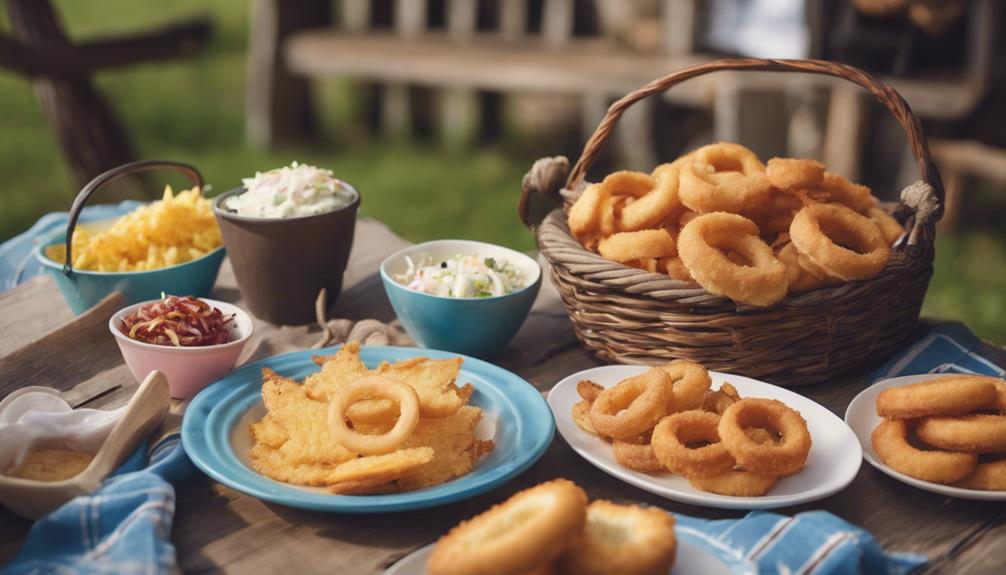
Now that you've perfected the art of searing with your Alfresco grill's infrared burner, it's time to turn your attention to the supporting actors of your BBQ: delicious side dishes that will impress your guests.
You can elevate your cookout with creative potato salads like Avocado Potato Salad, Lemon Dill Potato Salad, or Warm German Potato Salad. Or, try pasta salads like Pesto Pasta Salad, BLT Macaroni Salad, or Feta Basil Balsamic Pasta Salad – they're perfect complements to your BBQ.
Want to mix things up? Add a twist with Pepperoni Pizza Macaroni Salad or Mexican Corn Macaroni Salad for a unique and flavorful side dish.
The best part? These sides can be prepared ahead of time, allowing you to focus on grilling the main course and enjoying the company of your guests.
Experiment with different potato and pasta salad recipes to find the perfect side dish to impress at your Alfresco BBQ cookout. With these delicious options, you'll be the BBQ master in no time!
Grilled Desserts to Die For

You're about to discover the sweetest part of your alfresco BBQ – grilled desserts! Get ready to elevate your outdoor cooking game with mouth-watering treats that will make your guests swoon.
From caramelized fruits to sweet pastry delights, you'll learn how to create unforgettable desserts that will be the talk of the party.
Fruit on the Grill
As the sizzle of the grill fades, turn your attention to the sweet treats that await, where grilled desserts like Pina Colada Pie, Smore Brownie, and Grilled Cake offer a unique and delicious end to your BBQ feast.
But don't stop there! Grilling fruits like apples, apricots, and pineapples adds a caramelized sweetness and smoky flavor to your dessert. Imagine sinking your teeth into a grilled apple taco or savoring the sweetness of grilled apricots with honey ricotta – it's a game-changer!
Here are some tips to get you started:
** Experiment with different fruits and grilling times to find your perfect combination
** Brush fruits with a little butter or oil to prevent sticking and add flavor
Try pairing grilled fruits with creamy toppings** like whipped cream or ice cream
Don't be afraid to get creative with your grilled fruit desserts** – the possibilities are endless!
Impress your guests** by incorporating grilled desserts into your BBQ menu for a unique twist
Sweet Summer Treats
Savoring the sweetness of summer has never been easier, with grilled desserts that will make your taste buds do the happy dance! Imagine serving up Pina Colada Pie or Smore Brownie at your alfresco BBQ – your guests will be impressed!
Grilled cakes, apple tacos, and apricots with honey ricotta are unique and delicious options to add to your dessert menu. The best part? Your alfresco grill can be used to create these mouth-watering treats with a touch of smoky flavor.
Grilling desserts adds a fun and interactive element to your outdoor cooking experience. It's a great way to experiment with new flavors and impress your friends with your culinary skills. Don't be afraid to get creative and try out new recipes – your guests will love the unique twist on traditional desserts.
Grilled Pastry Delights
Take your alfresco BBQ to the next level with grilled pastry delights that will leave your guests begging for seconds. Who says grilled food has to be savory? Grilled desserts offer a unique twist to traditional sweets and can be a fun way to end a cookout.
You can experiment with grilled cakes, pies, and even fruits like apricots with honey ricotta – the possibilities are endless!
Here are some grilled pastry delights you might want to try:
Grilled Pina Colada Pie**: a tropical twist on the classic pie
** Grilled Smore Brownie: a s'mores-inspired treat that's perfect for a cookout
Grilled Cake**: a classic dessert with a smoky twist
** Grilled Apple Tacos: a sweet and crispy dessert that's perfect for fall
Grilled Apricots with Honey Ricotta**: a sweet and savory combination that's sure to impress
Perfecting BBQ Temperature Control
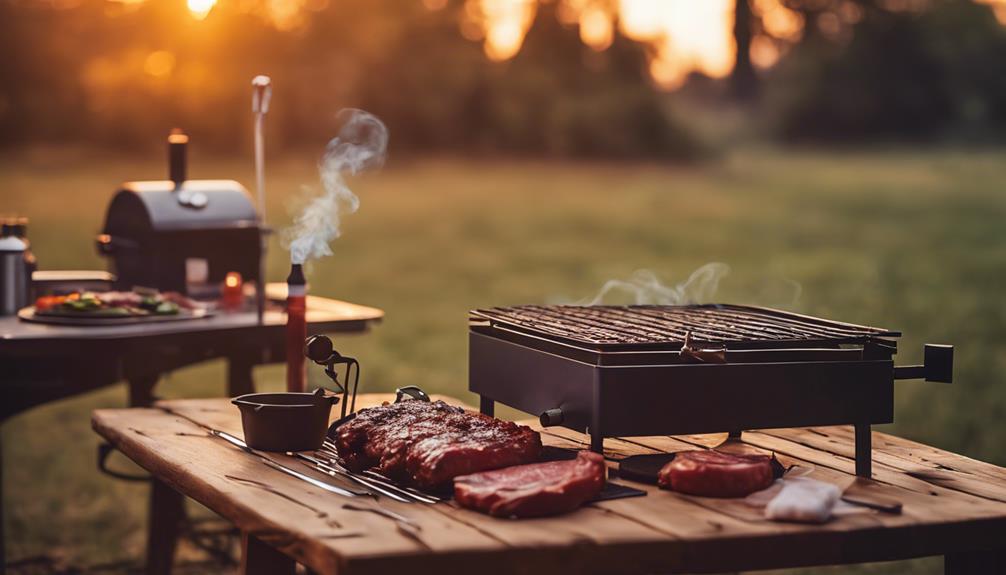
Managing the heat is crucial when it comes to BBQ mastery, and you'll want to dial in the perfect temperature to achieve tender, juicy results. With an Alfresco grill, you've got advanced temperature control features at your fingertips. Take advantage of the infrared burners and convection burners to precision-cook your favorite dishes. The 42-inch Alfresco grill is a game-changer, boasting quick heat-up times and even heat distribution for consistent cooking temperatures.
When it comes to ideal temperature management, don't forget to utilize the smoker box burner and sear zone. Experiment with different temperature settings to achieve the perfect level of doneness for your meats and veggies.
Remember, it's all about finding that sweet spot – and with practice, you'll be a BBQ master in no time!
Alfresco BBQ Recipe Favorites
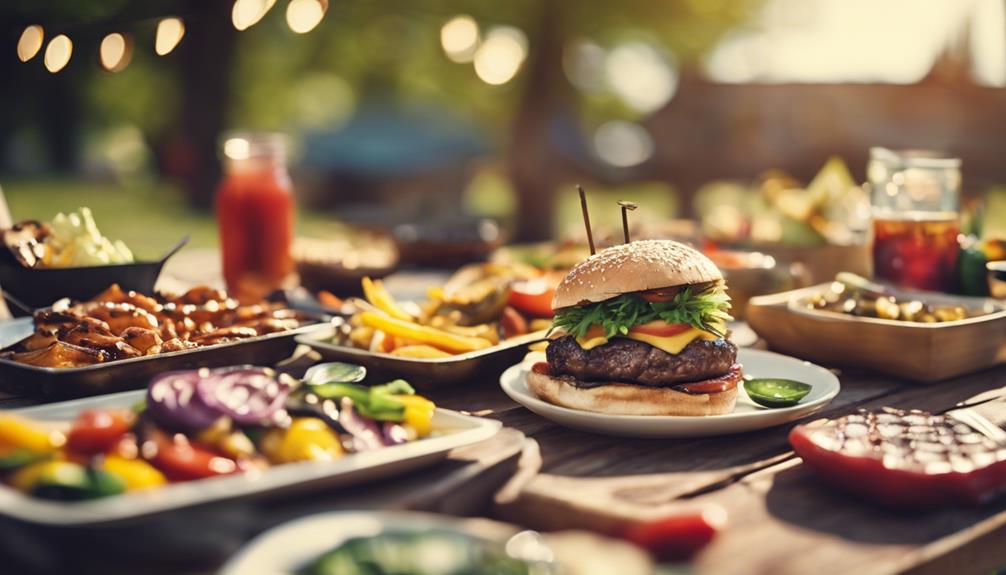
With your Alfresco grill's temperature control mastered, it's time to explore the world of mouth-watering BBQ recipes that'll make your outdoor cooking adventures unforgettable. You're just a few ingredients away from creating unforgettable meals that'll impress your family and friends. From savory to sweet, Alfresco BBQ recipes have got you covered.
Here are some of our favorite recipes to get you started:
- Tri Tip in the Oven: A classic BBQ favorite with a twist, perfect for a quick and easy dinner.
- Grilled Pina Colada Pie: Yes, you read that right – grilled dessert! This tropical treat is a game-changer for outdoor gatherings.
- Lemon Garlic Chicken Thighs: Zesty and flavorful, these chicken thighs are perfect for a summer cookout.
- Avocado Potato Salad: A invigorating twist on a classic potato salad, perfect for hot summer days.
- Grilled Apple Tacos: A sweet and savory dessert that's sure to impress your guests.
These recipes are just the starting point for your outdoor culinary adventures. With your Alfresco grill and a little creativity, the possibilities are endless!
Outdoor Cooking Safety Reminders
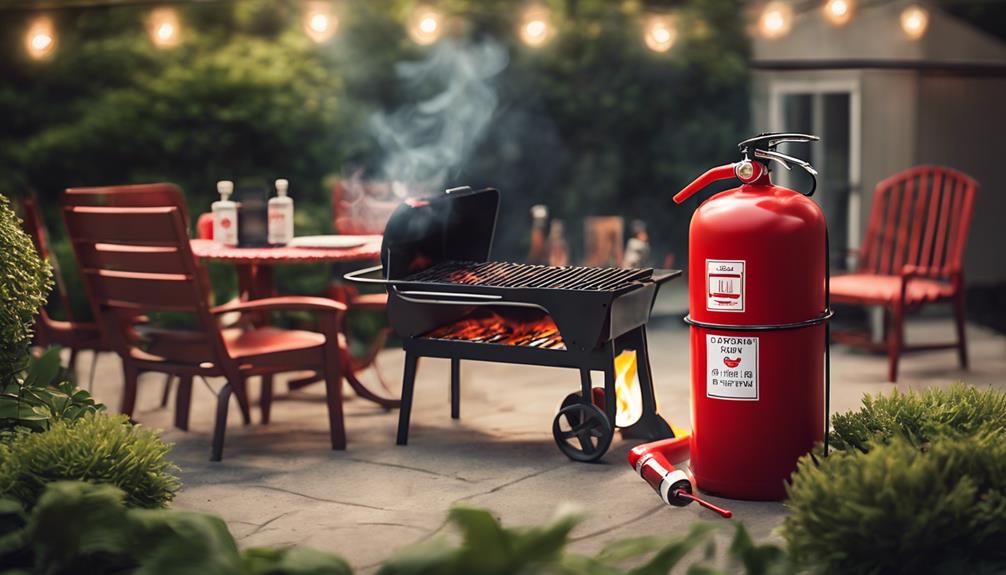
Ensuring outdoor cooking safety reminders are an essential aspect of maintaining a perfect BBQ and preventing any potential safety hazards. As you gear up for your alfresco cookout, don't forget to prioritize safety alongside flavor and fun!
Here are some important safety tips to keep in mind:
| Safety Reminders | What to Do |
|---|---|
| Prevent fires | Keep a fire extinguisher nearby and ensure proper ventilation when using gas grills in enclosed spaces. |
| Avoid burns | Use long-handled grill tools and keep children and pets away from hot grills. |
| Check for leaks | Apply a soapy water solution to gas connections and look for bubbles to detect leaks. |
Remember to always follow the manufacturer's instructions for assembling, maintaining, and operating your outdoor cooking equipment. By being mindful of these simple yet essential safety reminders, you'll be able to enjoy a stress-free and enjoyable BBQ experience with your loved ones!
Frequently Asked Questions
How to Throw a Successful Cookout?
You're planning a cookout and want to make it a success?
First, create a guest list and pick a date that works for everyone.
Next, plan a menu that caters to different tastes and diets.
Set up a comfy outdoor space with seating, shade, and decorations.
Don't forget to have a backup plan for unexpected weather changes, and stock up on supplies like plates and utensils.
With a little planning, you'll be on your way to hosting an unforgettable cookout!
What Is the Best Food to Bring to a Cookout?
So, what's the best food to bring to a cookout?
Well, you can't go wrong with classic potato salad, pasta salad, or grilled chicken.
If you want to mix things up, try marinated tri-tip, lemon garlic chicken thighs, or brown sugar soy glazed chicken.
And don't forget sweet treats like smores or grilled fruit!
Whatever you choose, make sure it's easy to eat and shareable.
Your guests will thank you!
How to Plan a Great Cookout?
You're thinking, 'Planning a cookout is so overwhelming, how do I even start?' Relax, it's easier than you think!
To plan a great cookout, start by choosing a date and time that works for your guests, then create a menu that caters to different tastes and dietary needs.
Don't forget to prep for seating, shade, and entertainment. Make a checklist of supplies, and set up designated areas for cooking, serving, and dining.
With a little planning, you'll be on your way to a stress-free and fun-filled cookout!
How Long Should Rotisserie Chicken Be on an Alfresco Grill?
So, you're wondering how long to keep that rotisserie chicken on the grill, huh? Well, here's the deal – plan on about 1.5 to 2 hours for a juicy, perfectly cooked bird.
But don't just set a timer, okay? You gotta keep an eye on that internal temperature, aiming for 165°F.
And don't worry, the Alfresco grill's rotisserie function has got your back, ensuring even cooking and a crispy exterior!
Conclusion
You've made it to the grand finale of our alfresco BBQ extravaganza! You're now equipped with the secrets to throw a sizzlin' soiree that'll leave your guests hungry for more.
Remember, practice makes perfect, so don't be afraid to experiment and add your own flair to these recipes.
As the saying goes, 'the proof is in the pudding' – or in this case, the perfectly grilled burger!
So go ahead, fire up that grill, and get ready to serve up a storm!
